Japan's 97-year-old cherry blossom guardian
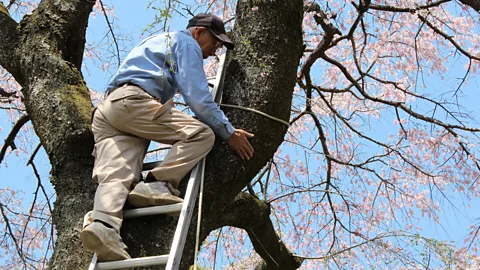 Tōemon Sano
Tōemon SanoFor 16 generations, master gardeners in this one family have dedicated their lives to preserving one of the nation's most cherished – and highly sought-out – symbols.
Each spring during sakura (cherry blossom) season, the Ninna-ji and Daikaku-ji temples in Kyoto's leafy Ukyo ward are overwhelmed by busloads of tourists who come to snap photos of the temples' blooming cherry trees. But little do they know that only a few kilometres away, there's a secret sakura garden hiding in plain sight.
This 1.5-hectare public plot, known as the Sano family garden, is an oasis of calm; found just off an unassuming street near traditional wooden machiya townhouses. But this isn't just any ordinary cherry blossom tree grove; it's also the domain of 97-year-old Tōemon Sano: Japan's most renowned sakuramori (cherry blossom guardian).
For more than a millennium, Japanese people have admired the delicate sakura petals as a symbol of transience and beauty. Today, this national pastime has blossomed into an international obsession, with millions of tourists from across the world descending on Japan to sip seasonal sakura-themed Starbucks drinks and participate in hanami (cherry blossom viewing) picnics and festivals from March to May. But while the world waits with bated breath for the cotton candy-coloured blossoms to burst each spring, one of the most important and least understood roles in the trees' maintenance lies with their behind-the-scenes caretakers.
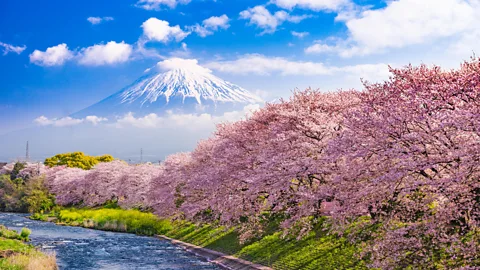 Alamy
AlamyAccording to Naoko Abe, cherry blossom expert and author of The Sakura Obsession, skilled sakura arborists have existed in Japan since time immemorial. But thanks to the popularity of the 1970s novel Sakuramori about a sakura-infatuated tree expert, communities began bestowing this title to deserving specialists in the years that followed. Typically a professional gardener or tree surgeon, a sakuramori is a combination of Lorax, botanist and spiritual guide dedicated to studying sakura and promoting their preservation.
As Asada Nobuyuki, the secretary general of the Japan Sakura Association, explained, there are roughly 100 sakuramori in Japan today, but one stands out. "It can be said that Tōemon Sano is most deserving of the title sakuramori," said Nobuyuki, crediting the breadth of Sano's long, productive career and his family's generational wisdom.
On a Friday morning earlier this month, I crunched through gravel at this historic sanctuary to meet Sano himself. He is the 16th generation in a distinguished line of farmers who began cultivating the nearby land (known for its late-blooming dwarf cherry trees) in the mid-1600s. When his father died in 1981, he assumed the first name Tōemon, per family tradition, and took the reins of Uetō Zōen, the landscaping firm his family started in 1832 that is headquartered in the garden.
For more than 80 years,Sano has utilised his specialised knowledge to steward the survival of sakura trees in gardens throughout Japan and the world – including at the Isamu Noguchi-designed Japanese garden at the Unesco headquarters in Paris. Sakura Taikan, his most famous book, is the definitive tome on the trees and the culmination of research begun by his grandfather during the Taishō period (1912–1926).
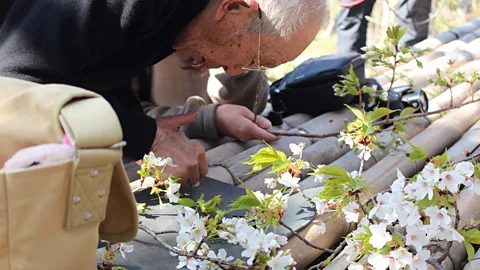 Tōemon Sano
Tōemon SanoBut just before our visit, the nonagenarian became ill and was rushed to hospital. Still, he arranged for me to meet his son, Shinichi Sano, who oversees operations at Uetō Zōen and who will one day succeed his father and carry on the family legacy as the next Tōemon and sakuramori.
As we strolled through the garden, Shinichi paused at an umbrella-like shidarezakura (weeping cherry), its swooping branches covered in geisha-blush blossoms. Shinichi said this 40-year-old tree was grown from the seeds of the most iconic sakura in Kyoto: the dramatic weeping cherry tree in Maruyama Park, which was originally grown in the Sano family garden and replanted in its current public spot by Tōemon's father, the 15th Tōemon Sano.
Though sakura have attracted hanami lovers for generations, Shinichi said a major threat now looms over them: climate change. According to the Japan Meteorological Agency, cherry blossoms have started to bloom 1.2 days earlier per decade since 1953. A recent study found that the peak bloom of Kyoto's cherry blossoms in 2020, 2021 and 2023 were the earliest in more than 1,200 years.
"If global warming continues at this rate, I believe there will eventually be regions in Japan where cherry trees no longer bloom," Shinichi said, noting that winters with elevated temperatures could nip blooms in the bud entirely, as trees require a sustained chill to initiate the blossoming process. If this happens, a major part of Japan's springtime tourism appeal would be jeopardised – as well as an integral part of the nation's cultural identity.
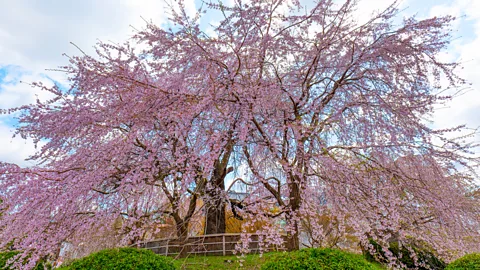 Eli Obus
Eli Obus"The reason Japanese people are fond of cherry blossoms is because, after enduring a harsh winter, the vivid flowers bloom in the monochrome landscape as if to herald the long-awaited arrival of spring. This quiet presence is what draws people in and resonates deeply in our hearts," Tōemon later told me over email after being released from hospital. "Out of 365 days a year, the cherry blossoms endure wind and snow for 360 days, only to bloom gloriously for five days before gracefully scattering. I believe this fleeting yet dignified cycle reflects the Japanese perspective on life. There may be a sense of personification in the way we view the cherry blossom, as if it embodies a spiritual or moral belief that, through patience and perseverance, one will eventually bloom."
More than just trees
Cherry blossoms are integral to the Japanese psyche and soul. In ancient Japan, kami (deities) were said to reside in the trees. Beginning in the 800s, Emperor Saga (whose former residence is up the road from the Sano family garden at Daikaku-ji) ushered in the practice of hanami with official cherry blossom viewing parties. For samurai during the Kamakura period (1185-1333), sakura became a unifying military symbol for the warriors to fall with dignity and grace – a message echoed during World War Two for kamikaze pilots. In light of this national importance, protecting sakura and ensuring their sustainability is something Japan takes seriously.
Today, according to Abe, many of the most famous places travellers go to see sakura in Japan, such as Mount Yoshino in Nara and Matsumae Park in Hokkaido, each have a dedicated sakuramori. Interestingly, Tōemon and his family's unbroken line of Japanese gardeners may not have risen to the level of sakuramori were it not for a British botanist.
In 1902, English naturalist Collingwood "Cherry" Ingram became fascinated by Japanese cherry trees during his first visit to the nation, but he lamented how industrialisation and cloning had led to a decline in their diversity. In an effort to protect them, he sent 50 endangered varieties back to England and planted them in his garden. When he eventually tried to propagate the varieties back in Japan come the 1930s, including the rare Taihaku cherry that had ceased to be cultivated in Japan, the trees didn't survive long.
Given the Sano family's generational expertise, Ingram sought out Tōemon's grandfather, who developed a way to transport the trees successfully so they wouldn't sprout before arriving in Japan. From that little shipment of Taihaku trees, it is thought that tens of thousands of Tahihaku now flourish across Japan and were saved from national extinction.
Where to see Tōemon Sano's sakura in Kyoto:
In addition to admiring Tōemon's carefully cultivated sakura at Maruyama Park, the Ruriko-in estate, the Katsura and Shugauin imperial villas and the Ninna-ji Temple, visitors can also explore the Sano family garden year-round from 09:00 to 16:00 (best to call ahead at +81 75-871-4202).
Tōemon's grandfather became something of a Johnny Appleseed for sakura – taking grafts and growing saplings, venturing to far-flung places like the Kuril Islands and Sakhalin before he died in 1934. Tōemon's father then took up the mantle while training his son to continue the family legacy.
Today, travellers enjoying the mesmerising weeping cherry in Maruyama Park have Tōemon to thank, as the city asks him to care for the tree throughout the year. Visitors can also admire Tōemon's work at the Ruriko-in estate, where sakura stand in stunning harmony on the property close to the Golden Pavilion of Kinkakuji; the Katsura Imperial Villa; the Shukaguin Imperial Villa; Ninna-ji Temple garden; and, of course, at the nearby Sano family property.
Even at 97, Tōemon still collects information on different types of sakura and makes detailed drawings of the blossoms' anatomy from the stamen and pistils to the bracts and peduncles – all to better understand how to help sakura flourish.
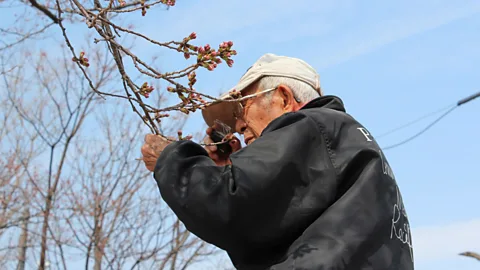 Tōemon Sano
Tōemon Sano"My feelings toward cherry blossoms are something that has been ingrained in my daily life," Tōemon said. "My daily life follows the old Japanese way of life seikō-udoku, 'working in the fields when it's sunny and reading when it rains'… If I am asked to preserve rare cherry blossoms, I respond by grafting or sowing seeds."
More like this:
• The 96-year-old painter who saved a village
• The 89-year-old woman who is still travelling the world solo
To that end, he has successfully propagated cherry trees in the atomic bomb-ravaged soil of Hiroshima and saved a 150-year-old Oshima cherry tree in Yokohama that was destined to be cut down. In that instance, when the local community enlisted him to relocate the storied sakura 100m away to preserve an iconic view of Mt Fuji, he took careful stock of the three layers of soil surrounding the tree. Before digging, Tōemon ceremonially placed sake and rice crackers in the dirt as an apology for the disruption, added charcoal and provided an octopus offering. Also known to hug trees, Tōemon embraced the trunk tightly upon its successful replanting.
Rooted in the future
As I toured the Sano family garden, falling cherry petals fluttered to the ground like snowflakes, a phenomenon called sakura fubuki. In addition to kami, the souls of ancestors are also said to reside in the flowering cherry blossoms, connecting the Sano family to their forebearers and representing the fleeting nature of each generation. Amid this transient beauty, the Japanese concept of "mono no aware" (the wistful recognition of life's ephemerality and the beauty in that impermanence) feels especially present.
"Cherry blossoms reflect the way of life of the samurai in the old days: beautiful in the way they fall with grace and dignity," Shinichi said. Shinichi's 38-year-old son, Tomoaki, who has started to take over day-to-day responsibilities in the family business, has one child – a daughter. It would then be possible to have the first female sakuramori in this line.
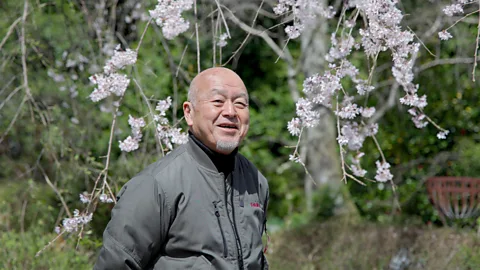 Eli Obus
Eli Obus"It will depend on her decision," Shinichi said.
For now, though, the family is allowing the 16th Tōemon Sano to focus his attentions on what he does best.
"While my father is healthy, he will be the one to take care of the sakura," Shinichi said. I then asked if he felt he would one day be ready to assume the role of Tōemon Sano and sakuramori.
"I won't really know until I actually become the 17th generation," Shinichi said. "I think I will truly feel the responsibility for the first time when I actually inherit the name… I'll do what I'm asked to."
--
If you liked this story, sign up for The Essential List newsletter – a handpicked selection of features, videos and can't-miss news, delivered to your inbox twice a week.
